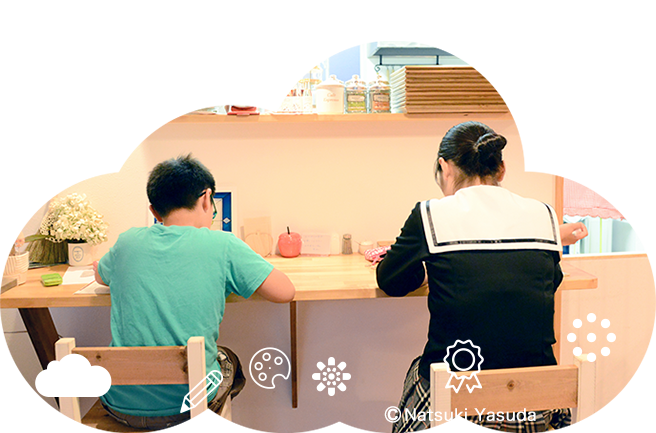
To create a better and brighter future.
In which our hearts and our belongings are entwined.
We must preserve this beautiful earth for years to come.
To do so, this is what we can do.
Our role is to pass on memory-laden items to the next deserving person.
Propelling those memories throughout the world, one person at a time.
Connecting people’s hearts with their belongings will allow us to unite more with the earth.
A single transaction, and beyond.
This is our starting point.
Doing what we can, one purchase at a time.
How Does ALLU Help the Earth?
Project
How much CO2 consumption does ALLU reduce by reusing?
ALLU sets goals to reduce CO2 emissions through promoting the importance of ‘Reuse’.
We aim to unite with our customers to create a more sustainable planet.
Target Achieved!
Measured Period 2022.4.14 – 5.13
- CO2 Reduction Target
-
100,000t
- CO2 Reduction Total
-
140,585t
-
Equivalent to Annual Cedar Tree CO2 Absorption
Approx. 700,000 Trees
100,000t -
Equivalent to approx. 20 Tokyo Domes
50,000t -
*Based on Egypt’s largest pyramid, the Great Pyramid of Giza (Approx. 138.5m tall) Equivalent to approx. 20 Pyramids
100,000t
*The amount of CO2 reduction contributed by this project is based on items circulated through the Valuence Group’s ecosystem (products inspected and sold at our vintage brand stores ALLU and B2B luxury auction “Star Buyers Auction”, etc.)
Learn About Reuse
Take Our Reuse Quiz
The environmental impact (amount of CO2 reduction) contributed through reuse.

Q. Which of the following contributes more to reducing CO2 emissions?
- A Leather Handbag
- A PVC Handbag
- Check Answer
-
Correct Answer: Leather Handbags
A leather handbag contributes to reducing approximately 560 kg of CO2.
A PVC handbag contributes to reducing approximately 190 kg of CO2.

Q. Which of the following contributes more to reducing CO2 emissions?
- Shoes
- Outerwear
- Check Answer
-
Correct Answer: Shoes
A pair of shoes contribute to reducing approximately 450 kg of CO2.
A piece of outerwear contributes to reducing approximately 150 kg of CO2.

Q. Which of the following contributes more to reducing CO2 emissions?
- A Leather Belt
- A Stainless Steel Belt
- Check Answer
-
Correct Answer: Leather Belts
A leather belt contributes to reducing approximately 27 kg of CO2.
A stainless steel belt contributes to reducing approximately 14 kg of CO2.
OUR APPROACH SUSTAINABLE How ALLU Views the Importance of Sustainability
Reducing the Impact on the Environmental
Our modern preference for ‘always seeking the new, bright, and shiny’ has come at a significantly high cost to our planet. This includes everything indispensable to our daily lives, including branded goods, watches, jewellery, cars, and real estate. By breathing new life into used and pre-owned belongings such as these, we can reduce the environmental impact that would come with the manufacturing and development if bought new. At ALLU, we aim to create and maintain a more sustainable future in which ‘reusing’ is the norm in society.
Measuring the Contribution Made to Environmental Footprint Reduction through Secondary Distribution of Luxury Goods.
While luxury goods offer enduring value that ensures they can be used lovingly for many years, there is a dimmer side to the industry that should be discussed more. The sourcing of raw materials as well as overproduction present significant problems to our environment, problems which we at ALLU are tackling by aiming for the conversion to a comprehensive ‘Circular Economy’. The Valuence Group is an entity devoted to spreading the joy of luxury goods to as many people as possible, and our business model is firmly grounded in the principle of reusing luxury goods. In regard to the products handled by our subsidiary companies, the Valuence Group precisely measures its environmental footprint (※1) and waste minimisation efforts, utilising techniques from the LCA (Life Cycle Assessment ※2) method. The Valuence Group developed a system unique to the company to conduct these measurements: the Valuence Resale Impact Calculator. Using this calculator, CO2 and PM2.5 emissions, as well as water and energy use, can be accurately tracked and recorded.
※1 Footprint: the environmental impact of an individual, collective or corporation’s greenhouse gas emissions.
※2 Life Cycle Assessment: a method to measure the life cycle of a product (which includes harvesting resources, producing materials, manufacturing the product, the product’s circulation within the market, consumption, disposal and recycling), or the quantitative evaluation of a product’s environmental burden.
To Create a Sustainable Future
At ALLU, we are committed to the following initiatives.
1 Experience Contributing to the Environment
What we can do for our children and planet right now.
Please bring your used clothes to one of our ALLU stores today.
All sale proceeds will be used to support ‘Chance for Children’, an organisation that works to end the cycle of poverty for children.

Eliminating Waste and Creating Opportunities for Children
The Blue Baton Sustainability Initiative
Bring your used clothes to ALLU. All sales proceeds from the Blue Baton initiative will be donated to ‘Chance for Children’, an organisation that works to end the cycle of poverty for children through the power of education. They provide learning opportunities for as many children as possible across Japan who live in poverty or have been affected by natural disasters. In addition, through a partnership with Kimura Seni Co., the collected clothes will be reused as raw materials instead of being incinerated or disposed of in landfills. This sustainable approach helps protect our limited resources and reduces the environmental burden, leading the way to a brighter future for our beautiful planet.
2 From Concierge to Value Designer

At ALLU, our concierges have been reborn as ‘Value Designers’ who can support and educate our customers on managing, maintaining, and appreciating their valuable assets. We aim to realise a sustainable society by promoting environmentally friendly ‘reuse’ items, further enriching our clients’ lives and futures.
How to Sell
How to Sell Luxury Goods at ALLU





